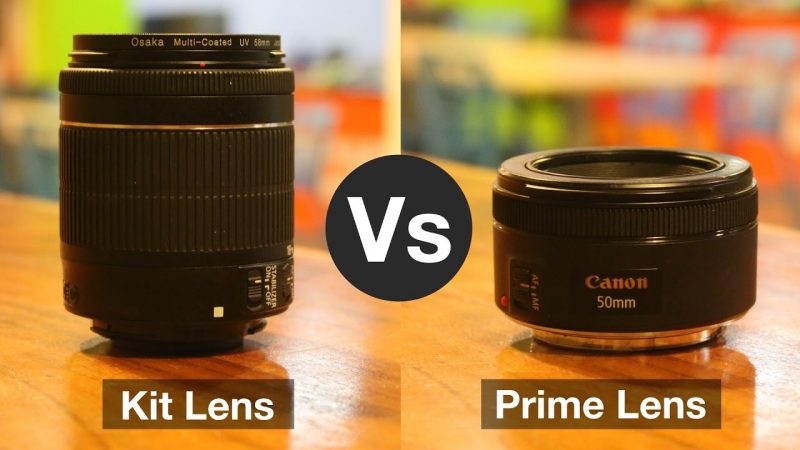
A kit lens is a lens that is typically included with a camera when it is purchased. These lenses are designed to be versatile and cover a wide range of focal lengths, usually 18-55mm or 24-70mm. They are often made of plastic and are not as high quality as more expensive lenses.
On the other hand, a prime lens has a fixed focal length, meaning it does not zoom. These lenses are typically higher quality than kit lenses and offer better image sharpness, low-light performance, and a wider aperture (lower f-stop number) for better shallow depth of field effects. They are also often smaller and lighter than kit lenses.
In summary, a kit lens is a versatile lens that is included with a camera and covers a wide range of focal lengths, while a prime lens has a fixed focal length, is higher quality and offers better image sharpness, low-light performance, and a wider aperture.
When I started developing interest towards photography, Firstly, I was clueless about the terminologies used in the photography world. Everything seemed out of my dictionary. The regular question I used to get in my mind was the difference between Kit and Prime lens.
Answers on Google, Yahoo, Quora dint help me as my knowledge was in a nascent stage, But once I bought a basic DSLR and started experimenting with the lenses I started getting practical answers for all my questions.
So, Today I am not confusing you with same terminologies but trying to put the message in common man’s language 😉
Honestly, if this is your first DSLR it probably won’t really matter much to you until you learn how to use your camera in manual mode.
Difference between Kit lens and Prime lens
1) What is a Prime Lens?
A prime lens is a lens with a fixed focal length (also commonly referred to as a “fixed lens”). What this means is that such a lens has a set angle of view which can not be changed – unless you move, you can not make the image appear larger or smaller within the frame. The only way of enlarging your subject and making it fill more of the frame is by physically getting closer to it. In turn, the only way to fit more into the frame is to step back.
2) What is a Zoom (Kit)Lens?
A zoom lens, on the other hand, has a variable focal length. By turning the zoom ring, you move optical elements inside the lens to achieve a different angle of view. This means that you can make objects appear larger by turning the zoom ring in one direction or fit more objects into the frame by turning it in the opposite direction.
A kit lens is a “starter” lens which can be sold with an interchangeable-lens camera such as a single-lens reflex camera. It is generally an inexpensive lens priced at the lowest end of the manufacturer’s range so as to not add much to a camera kit’s price.
A prime lens, in film and photography, a prime lens is either a photographic lens whose focal length is fixed, as opposed to a zoom lens, or it is the primary lens in a combination lens system.
The difference between a kit & a prime is that a prime is a fixed length (meaning no zoom) and usually has a high maximum aperture (small # like 1.8). A kit lens is a zoom lens (typically 18-55mm) and has a variable maximum aperture (3-5.6 depending on your focal length). If you have a kit lens and shoot in manual, every time you zoom in or out, your aperture will change requiring you to adjust your settings for each frame.
If this is your first DSLR and you will be shooting in auto most of the time, a kit lens is fine.
A “kit lens” is simply the lens included in a “kit” with a camera body. Nowadays a kit lens is almost always a zoom lens.
Shooting with a prime is quite different than shooting with a zoom, and I enjoy it much more. Other people prefer zooms and never shoot with primes.
Zoom lenses have also gotten impressively sharp – most, even some cheap kit lenses, are sharp enough for day-to-day needs and also boast effective image stabilization systems. Some of the modern pro-grade lenses offer image quality that matches or even surpasses primes lenses in the same focal range. Despite all this, prime lenses haven’t really lost their desirability.
Lens manufacturers such as Nikon and Canon have been rapidly updating and expanding their lens arsenal with new and better choices. Third-party manufacturers like Sigma are stepping into the game with confidence. Thanks to this, choosing between a zoom and a prime lens is now harder than ever.
Also, check Prestige Property Photography London




